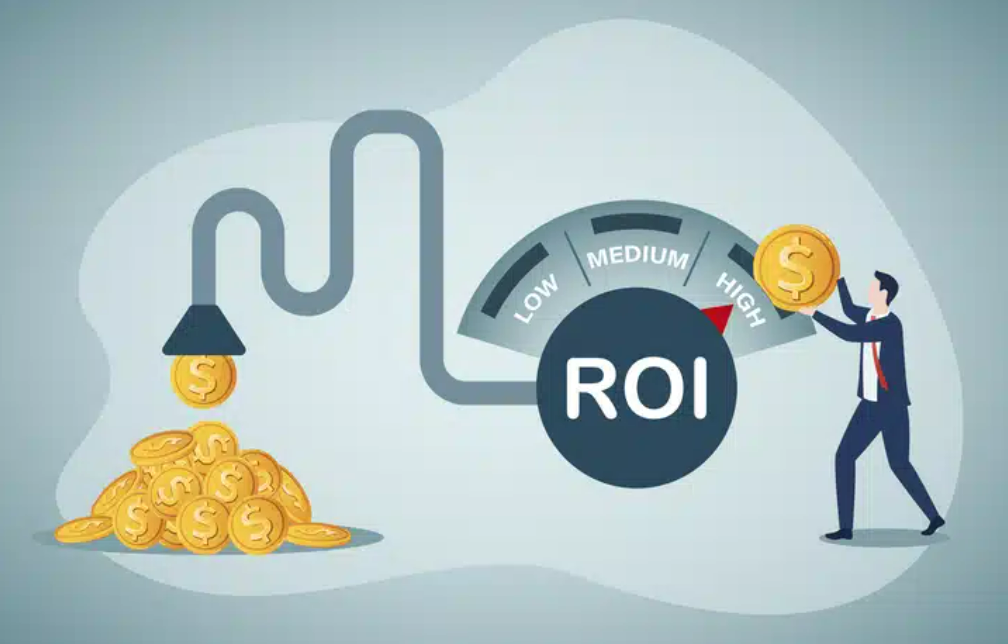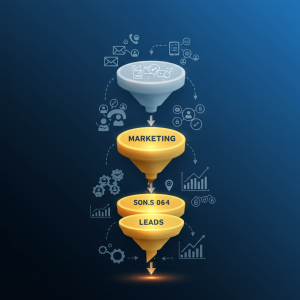Measuring ROI: Key Metrics for Modern Marketing Campaigns

Marketing departments face increasing pressure to demonstrate concrete returns on every dollar spent. This demand for accountability, while challenging, ultimately strengthens marketing’s strategic position within organizations. Yet measuring marketing ROI in today’s fragmented landscape requires nuanced approaches that extend beyond simplistic formulas. Understanding which metrics truly matter—and how they interconnect—separates successful marketing leaders from those struggling to justify their budgets.
The Evolved Marketing ROI Landscape
The fundamental concept of marketing ROI remains straightforward: return on investment equals net profit divided by total investment. However, modern marketing complexity demands more sophisticated measurement frameworks. Customer journeys now span dozens of touchpoints across various channels, making attribution increasingly difficult.
Moreover, different marketing initiatives serve distinct purposes. Brand-building campaigns deliver value through awareness and perception shifts, while demand generation activities drive immediate conversions. Each requires appropriate measurement approaches that acknowledge these differences while still connecting to bottom-line impact.
Marketing pioneer Seth Godin famously observed that “marketing is no longer about the stuff you make, but about the stories you tell.” This evolution demands corresponding changes in how we measure success. Today’s most effective ROI frameworks incorporate both quantitative performance metrics and qualitative indicators that capture broader business impact.
Foundation Metrics: Beyond Basic Conversion Rates
While conversion rates remain essential metrics, sophisticated marketers go deeper by analyzing conversion quality and downstream impact. Customer acquisition cost (CAC) provides valuable insights, but becomes truly powerful when segmented by marketing channel, campaign type, and customer segment.
Customer lifetime value (CLTV) offers critical context for acquisition investments. The CLTV
ratio reveals whether acquiring specific customer segments ultimately delivers profitable relationships. High-performing organizations typically maintain CLTV
ratios above 3:1, indicating sustainable acquisition economics.
Time-to-payback CAC adds temporal dimension to this analysis. This metric measures how quickly new customer revenue recoups acquisition costs. Extended payback periods may indicate pricing issues, onboarding challenges, or targeting the wrong customer segments—all factors that depress marketing ROI regardless of campaign efficiency.
A comprehensive study by McKinsey & Company found that companies implementing advanced marketing measurement approaches showed 15-20% improvement in marketing effectiveness. These organizations share a common trait: they view metrics as interconnected rather than isolated indicators.
Channel-Specific Performance Indicators
Different marketing channels require tailored measurement approaches that acknowledge their unique characteristics while still connecting to overall ROI frameworks.
For digital advertising, beyond click-through rates and cost-per-click, savvy marketers measure view-through conversions and incremental lift. These metrics reveal impact beyond direct response, capturing how advertising influences purchases even without immediate interaction.
Content marketing effectiveness extends beyond consumption metrics like page views. Engagement depth (time spent, scroll depth), content journeys (subsequent content consumed), and attribution influence (content touchpoints before conversion) provide more meaningful indicators of content’s contribution to revenue generation.
Email marketing assessment now incorporates deliverability rates, inbox placement, and subscriber lifetime value alongside traditional open and click metrics. The most sophisticated programs measure revenue impact from different email types—promotional versus educational versus transactional—to optimize the overall communication mix.
Social media evaluation has evolved from vanity metrics to meaningful business indicators. Audience growth quality, engagement-to-follower ratio, and social-attributed revenue capture true business impact rather than superficial popularity.
At brandsdad.com, we’ve found that channel-specific metrics must ultimately connect to cross-channel frameworks that acknowledge the interdependent nature of modern marketing efforts. Our analysis shows that high-performing campaigns typically succeed across multiple measurement dimensions rather than excelling in isolated metrics.
Attribution Models: From Last Touch to Comprehensive Frameworks
Attribution models determine how credit for conversions gets distributed across marketing touchpoints. Each model offers different perspectives on campaign effectiveness, with varying degrees of sophistication.
Single-touch models (first-touch, last-touch) offer simplicity but oversimplify complex customer journeys. Multi-touch models (linear, position-based, time-decay) distribute credit across touchpoints but require more sophisticated implementation. Data-driven attribution uses algorithms to determine optimal credit distribution based on historical patterns.
The attribution approach selected significantly impacts perceived ROI across channels. Consider email marketing: under last-touch attribution, it often appears highly effective since many purchases occur after email clicks. However, multi-touch models typically reveal these conversions were influenced by numerous preceding touchpoints, reducing email’s standalone ROI while highlighting its role within broader journeys.
Rather than seeking perfect attribution—an ultimately unattainable goal—forward-thinking marketers implement multiple complementary models. This approach provides balanced perspectives that acknowledge different channels’ contributions throughout the customer journey while still connecting to revenue outcomes.
Incrementality: The True Test of Marketing Impact
Perhaps the most crucial yet overlooked aspect of ROI measurement involves incrementality—determining what business outcomes would have occurred without specific marketing activities. This perspective addresses fundamental questions about marketing’s true impact.
Incrementality testing requires experimental design approaches including control groups, geographic testing, and matched-market analysis. While methodologically challenging, these techniques provide convincing evidence of marketing’s causal impact on business results.
According to Harvard Business Review, organizations implementing rigorous incrementality testing typically discover 20-30% of their marketing budget generates minimal incremental impact. This finding doesn’t necessarily indicate waste—rather, it creates opportunities for reallocation to higher-performing initiatives.
The incrementality mindset transforms ROI measurement from accounting exercise to strategic insight generator. By identifying which activities truly drive business results, marketers can optimize resource allocation while building stronger cases for investment in high-impact programs.
Balancing Short-Term and Long-Term Metrics
Marketing activities generate both immediate results and long-term impact. Comprehensive ROI frameworks acknowledge this reality by incorporating metrics across different time horizons.
Short-term indicators like conversion rates, cost-per-acquisition, and campaign ROI provide immediate feedback for tactical optimization. Meanwhile, brand health metrics, market share trends, and customer lifetime value reveal strategic momentum that drives sustainable performance.
The challenge lies in connecting these perspectives. Organizations overly focused on short-term metrics risk undermining long-term success through excessive promotional activity and underinvestment in brand building. Conversely, those ignoring short-term indicators may miss critical opportunities for immediate improvement.
Effective marketing leaders establish balanced scorecards that acknowledge both horizons. They recognize that today’s brand investments generate tomorrow’s conversion opportunities, while today’s conversion tactics shape long-term brand perceptions. This integrated perspective ensures marketing activities deliver both immediate results and sustainable advantage.
Implementation Challenges and Success Factors
Despite widespread recognition of measurement importance, many organizations struggle with implementation. Technical limitations, organizational silos, and capability gaps frequently impede effective ROI measurement.
Data integration represents the most common challenge. Customer interactions span websites, mobile apps, offline channels, and third-party platforms. Connecting these touchpoints requires robust identity resolution capabilities and integrated data architectures that many organizations haven’t fully developed.
Cross-functional alignment presents another common obstacle. Marketing measurement intersects with sales processes, customer service interactions, and product usage. Effective ROI frameworks require collaboration across these functions to capture marketing’s full impact on customer relationships.
Organizations overcoming these challenges typically demonstrate several success factors. They establish clear measurement governance with defined metrics, data sources, and calculation methodologies. They invest in both technology solutions and analytical capabilities to transform data into insights. Perhaps most importantly, they cultivate measurement cultures that value evidence-based decision making over intuition or tradition.
The Future of Marketing ROI Measurement
Looking ahead, several trends will reshape marketing measurement approaches. Privacy regulations and browser changes are restricting individual-level tracking, driving greater emphasis on aggregate measurement approaches including media mix modeling and incrementality testing.
Artificial intelligence is transforming attribution capabilities, enabling more sophisticated analysis of complex customer journeys while reducing implementation burdens. Machine learning algorithms increasingly identify patterns and relationships that human analysts might miss, creating opportunities for more precise ROI optimization.
Marketing measurement will increasingly incorporate operational metrics alongside financial indicators. Customer effort scores, product adoption rates, and service utilization metrics provide crucial context for understanding marketing’s broader business impact beyond direct revenue generation.
Perhaps most significantly, marketing measurement will become increasingly predictive rather than merely descriptive. Advanced analytics will enable marketers to forecast expected returns before campaign execution, allowing for preemptive optimization rather than retrospective analysis.
These developments will ultimately strengthen marketing’s strategic position by providing clearer evidence of both short-term impact and long-term value creation. Organizations that embrace these evolving approaches will gain competitive advantage through more effective resource allocation and superior customer experiences.
In today’s complex marketing landscape, ROI measurement requires nuanced approaches that balance multiple perspectives while connecting marketing activities to business outcomes. By implementing comprehensive frameworks that incorporate both short-term performance indicators and long-term value metrics, organizations can optimize marketing investments while building stronger cases for continued investment in growth initiatives.






